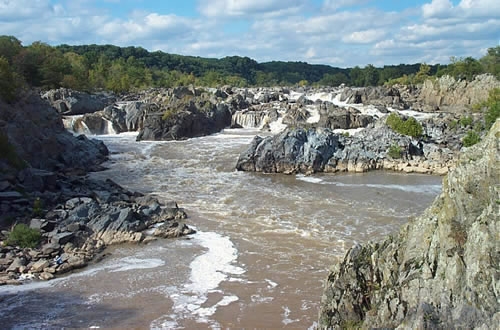Today, April 18, 2017, is World Heritage Day! While we consider the natural and historic wonders of the world, let’s also look around Maryland at the special places we’re proud to call part of our home. And for this year’s international theme, especially those places that support sustainable tourism:
What is sustainable tourism?
Sustainable tourism is the act of visiting a site in a way that is beneficial to the environment. The concept can also apply to the sites themselves, which should work to reduce their impact on the landscape, preserve natural resources, and contribute to the overall health of the earth.
Accokeek Foundation
Prince George’s County
Founded in 1957 by U.S. Senator Frances Bolton, the Accokeek Foundation works to protect the diverse habitat, shoreline and historic landscape across the Potomac River from Mount Vernon. Sen. Bolton purchased the 500-acre area after developers announced their plans to turn the land into “an oil tank farm, a sewage treatment plant, or housing developments.” Today the site focuses on sustainability, offering school tours and educational programs on sustainable agriculture and natural resource conservation. Their programs work to protect the habitat, conserve water, cultivate native flora, and raise rare livestock. A colonial farm interprets a pre-Revolution middle-class family and portrays Maryland’s agricultural history while preserving endangered plant and livestock breeds. Visitors can fish and kayak on the Potomac River, and nature trails wind throughout the park, offering plenty of opportunities to enjoy diverse wildlife protected on this land.
Explore More: The National Park Service teamed up with US/ICOMOS to develop a website at worldheritageusa.org for this occasion with beautiful photography highlighting some of the World Heritage Sites in the United States.
- Great Falls in the summer. Photo from the National Park Service.
- Great Falls Tavern, now the C&O Canal visitor center. Photo from the National Park Service.
Great Falls
Montgomery County
Fifteen miles north of Washington, D.C. is one of the most popular natural wonders in Maryland – Great Falls. The falls seen today developed over hundreds of millions of years. Geological change at the falls is slow, so slow that, according to the National Park Service, the view today is almost identical to what George Washington would have seen over 200 years ago…
But at that time, George Washington saw them as an obstruction to navigation and trade, and became the first person to develop a system of canals to circumvent them. In 1785, he founded the Potowmack Company, which constructed five canals along the river. Eventually a more extensive canal system would be built by the Chesapeake & Ohio (C&O) Canal Company. In use from 1828 to 1924, the C&O Canal connected Alexandria, Virginia and Georgetown to Cumberland, Maryland. Within one hundred years, however, the Baltimore & Ohio Railroad overtook it as the most efficient shipping method.
Visitors today can still enjoy the natural landscape along the canal and the river. The historic Great Falls Tavern at Lock 20, now a National Park Service visitors’ center, offers maps and information about the canal history, trails, and wildlife in the park. Ranger guided tours are available for school groups, and the river and towpaths are perfect for kayaking, running, and biking.
In the summer months visitors can even ride down the canal on a historic lock boat. The trail to Olmstead Island and the scenic overlook of Great Falls is about a ten minute walk from the Tavern. Built in 1992, the bridges and walkways through Olmstead Island protect its fragile, diverse habitat, while still allowing visitors to experience and appreciate the sweeping views of the river.
Rachel Carson House
Montgomery County
The Rachel Carson House, built in 1957, was home to the environmental activist and writer from 1957-1964. The house was designed by Carson herself and constructed to her specifications. She took great care to create a lush wooded garden landscape, with a small lawn and native plants, which reflected her commitment to the environment.
It was here that Carson wrote her seminal work Silent Spring, about the impact of chemical pesticides such as DDT on natural habitats and humans. Her book strongly influenced public opinion regarding DDT use, and eventually led to a ban on its use in the United States. Although there was backlash from companies that produced chemical pesticides, as well as from the USDA, the outcries against the government’s chemical pesticide practices eventually led to the founding of the Environmental Protection Agency in 1970.
The house is a National Historic Landmark, and now the headquarters of the Rachel Carson Landmark Alliance, which works to preserve her legacy and encourage interest in protecting the environment and creating sustainable communities. Carson’s house is open periodically – you can visit on the next Open House, which is Saturday, May 6, 2017.
This post was written by Maggie Pelta-Pauls, a Waxter Intern with Preservation Maryland. A graduate of The College of William and Mary, Maggie is primed to research and write about Maryland history – especially culinary history. Learn more about Maggie and our The Waxter Memorial Internship program here: presmd.org/waxter.


